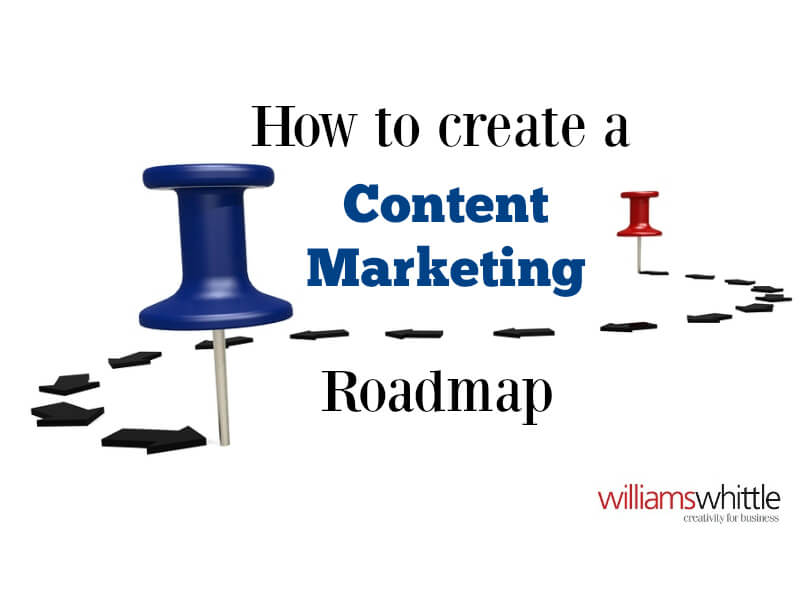Creating a content marketing roadmap is ultimately about generating content that people will want to read and that will build positive equity for your brand. So, where do you start? Anyone can dump a bunch of ideas down on paper, but it all starts with a strategy. We do this for every one of our clients, but the approach and the final outcome are tailored to meet their specific goals. This will be surely the truth in your case, too.
We start with documenting the reason each of our clients are even interested in content marketing. This can be a list of objectives mixed with goals. For example, for one of our clients, their content goals are the following (we’ve simplified a few to help keep their strategy confidential):
–Content marketing will help us reach and engage potential [our primary audience] of our [product] by representing the [unique selling proposition].
–We will reach [secondary audience] in the most authentic way – building the trust that is needed for them to trust us with their family.
–The content we produce will be helpful, inspiring, and shareable.
–Use the content to drive traffic to our website, earn their repeat interest and convert them to sales leads.
From there, we create a matrix of ideas that are realistically executable, including topics, types of content, author (or potential authors), channel of distribution, tone, CTA and timing. See example below.
But, hold up. It’s actually not that easy. Creating the matrix is a process that must be done with a high amount of collaboration among the team that will be responsible for creating and promoting content, especially if you want your plan to be realistically executable. Creating the strategy and the roadmap are the foundation to successful execution of content marketing, but it doesn’t happen easily. To make the content happen, you’ll need dedication and resources (which usually means you need to delegate.) In order for your marketing team to capture the right mix of stories, news and ideas, it takes constant nurturing and attention.
The “manager” of the content marketing program is then responsible for making sure the final content marketing roadmap strikes a balance of:
Content for donors in the early stages of the decision-to-donate process vs. those in the later stages
The majority of the donors that you’re interacting with are in the early stages of deciding where they want to donate their money. They probably fall into the first 2 steps in our donor motivation chart (see chart below), which we talk about in-depth in this previous blog post.
So, you shouldn’t produce a majority of your content that focuses on people that are in the “confidence” phase, someone that already trusts that your organization can deliver on its promises and is making an impact. Instead, when content planning, there needs to be a balance of content that addresses “who we are” and “why is our work important” as well as “how do we fulfill our mission,” and “what type of impact are we making?” According to the Content Marketing institute, “most brands focus too much time, energy, and resources on the fewer late-stage consumers.” (Late-stage consumers=donors in or near the “confidence” phase.)
Authentic-sounding voices vs. marketing voice
There is a time and place for a relaxed, friend-to-friend voice as well as a more business-like, careful voice. This graphic shows the basics of the spectrum of tone of voice (although I would argue that it’s very possible that brand advertising does not always fall into the clever/concise category all the time.) It is important that your content covers this spectrum so you’re not always writing in one tone of voice – for example, if you’re always writing in a witty, high energy voice, it could get overwhelming but also not appeal to donors in specific stages of the decision cycle, see previous.
Graphic from “AHA Media Group: Confessions of a Content Strategist”
Variety of content type (blogs, re-posting articles, photos, videos, etc) vs. singular (and sometimes most easy and familiar) method, like a newsletter
You, yourself are a huge devour-er of content. So you know that sometimes you’re in the mood to watch a video, sometimes you want to read other times you want to browse photos. And depending on the day, certain media can strike you in a compelling way. So, it’s important that you don’t focus on just one method of delivery and produce a variety. To start, split your efforts into two channels, like a newsletter and a photo blog. Then, build from there. This awesomely long infographic provides a laundry list of possible methods of delivery. Scroll down to the “No. 4 Strategy, Step 3.”
Data-led decisions vs. Brand-led decisions
You’ll certainly want to analyze the results of your current content efforts as input for planning new content. What content has been the biggest driver from social or from search? What’s the most popular content on your website? What has been the most read/viewed content on your social media platforms? This data will provide insight into what works or doesn’t jive with your audience. But, don’t get completely under the “data spell” and forget that you also need to make decision for the good of your brand. Maybe content that the data said was a flop was just shared at the wrong time? Or in the wrong way? With the wrong headline? Or you have new ideas for content that haven’t been tested. Don’t be afraid to let your brand and your overall marketing goals lead some of your content decisions.
Once you have your roadmap created and you’re in full execution mode, remember to go back to your original goals to keep on track. And don’t expect the roadmap to be set in concrete because you’ll want to change it based on what is actually happening at your nonprofit or in world news. If you need help with creating your content marketing roadmap, tweet me at @jrodmcd. I’ll be happy to provide advice.





